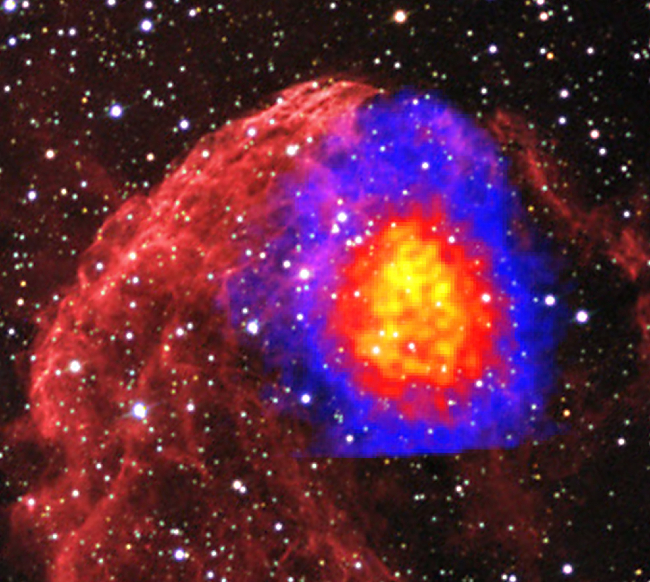
 Credit: JAXA/NASA/Suzaku; Tom Bash and John Fox/Adam Block/NOAO/AURA/NSF
Credit: JAXA/NASA/Suzaku; Tom Bash and John Fox/Adam Block/NOAO/AURA/NSF
Overcooked Fossil Jellyfish
The messy process by which stars explode into their environments is still much of a puzzle. How much of the environment is shaped by the star's formation and development in the millennia of millennia before the star dies? How does energy from the explosion get transferred into the material shot out into space? How does space become enriched by material processed by the star? Observations by the Japanese-US Suzaku Observatory of the supernova remnant IC 443 (also called the "Jellyfish Nebula") have provided astronomers with an important new clue. X-rays from the nebula detected by Suzaku are shown in false color above, superimposed on an optical image of the Jellyfish. By measuring the X-ray spectrum of the emission, Suzaku discovered radiation produced by the capture of free-floating electrons by completely stripped nuclei of silicon and sulfur. This "radiative recombination" emission requires extremely high temperatures (more than 50 million degrees Celsius) which could only have existed shortly after the explosion of the star - in effect, fossil radiation dating back more than 4000 years to the time of the stellar explosion.
Published: January 4, 2010
<
HEA Dictionary ● Archive
● Search HEAPOW
● Other Languages
● HEAPOW on Facebook
● Download all Images
● Education ● HEAD
>

Each week the HEASARC
brings you new, exciting and beautiful images from X-ray and Gamma ray
astronomy. Check back each week and be sure to check out the HEAPOW archive!
Page Author: Dr. Michael F. Corcoran
Last modified Monday, 26-Feb-2024 17:45:43 EST


